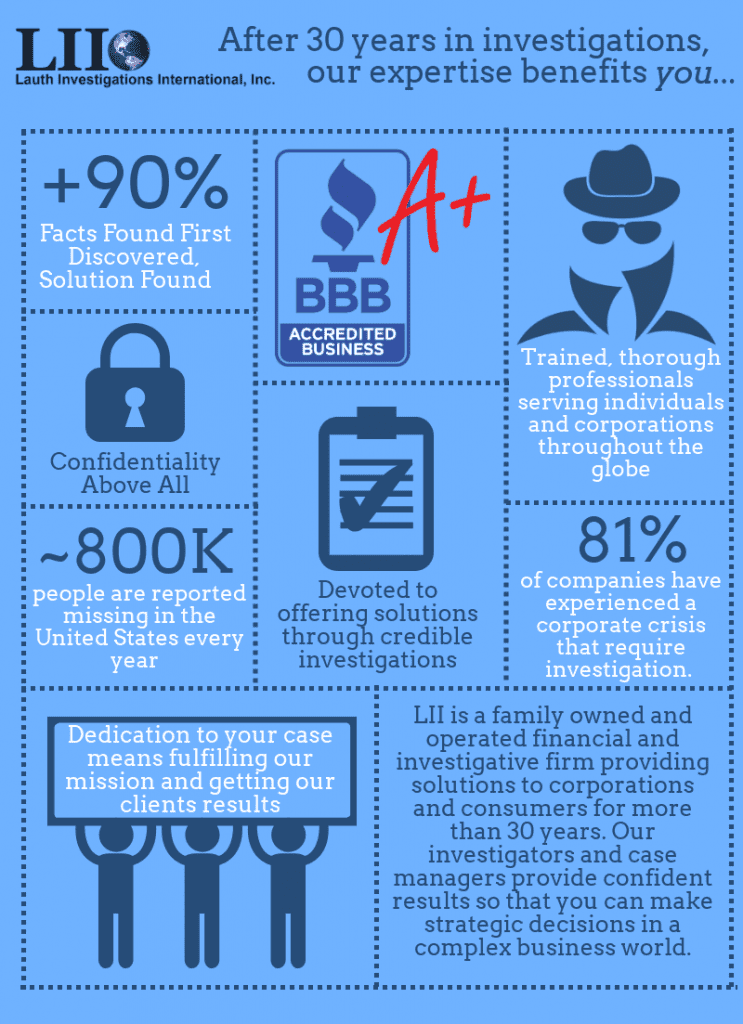5 Options for Who to Call When You Suspect Workplace Fraud
So you’ve realized that you are the victim of workplace fraud. What now? For many business owners, it can be frustrating trying to figure out what to do after uncovering fraud in the workplace. Here are five options of who to contact when you suspect that you’ve been duped. 1. Many begin by calling […]
When to Call a Professional for a Corporate Investigation
Most experienced professionals in upper-management and/or HR positions have had to conduct some type of corporate investigation at some point during their careers. It’s just par for the course. Unfortunately, there are certain circumstances in which an internal investigation conducted by company employees may not be the best option. In these cases, hiring a professional is a better choice. Not sure when’s the right time to call in reinforcements? Here are a few guidelines.
What is Workers’ Comp Fraud and How Can a Private Investigator Help?
Workers’ compensation is an insurance program that is designed to assist employees who become injured on the job or suffer a job-related illness. Unfortunately, not every claim that is filed is legitimate and the business is often the one that pays the price. In fact, more than 1 in 10 employers are concerned that a worker will fake an illness or injury in order to fraudulently collect workers’ comp benefits. Let’s take a closer look at the different types of workers’ comp fraud and what you can do to protect your company from becoming a victim.
7 Steps to a Successful Workplace Investigation
Despite your best efforts, complaints and internal issues will sometimes arise in the workplace. In these instances, a thorough investigation of the situation can vastly improve the chances of a favorable outcome for your company. For instance, the information you uncover can help build a case and/or protect your firm’s hard-earned reputation. If you’re dealing with a potential problem, such as employee theft, fraud or drug abuse, here are 7 steps to conducting a successful workplace investigation.
What’s Involved in a Copyright Infringement Investigation?

Copyright infringement can be one of the most detrimental infractions a business can fall victim to. Regardless of the size or industry of the organization, locating violators and holding them accountable is something that must be done to protect the integrity and hard work of the company. As experienced private investigators, we’ve assisted with countless copyright infringement investigations over the years. Here’s what the process typically involves.
Corporate Investigations: How to Locate Former Employees
Locating a former employee can be challenging. These tips can provide some direction prior to hiring a private investigator for a formal corporate investigation.
Private Investigators and Drone Usage
Gone are the days when private eyes had to flip through physical documents and phone directories, or find the location of someone with an actual map. And now, thanks to the advancements in drone technology, some investigators are opting to do away with physical surveillance.
Properly Vetting a Candidate
After a tragedy occurs, we often hear stories of survival. These stories give us hope, and allow us to emphasize with the victims who were brave enough to share their experiences. In these times of hardship, no one is going to question a victim’s story. Haven’t they been through enough already? Perhaps not. Sometimes there […]
Executive Background Checks
Hiring a new CEO, CFO, or COO can be a long and arduous process for many corporations. Sometimes, it’s easy to overlook risks in a high-ranking executive or trust dishonest information. Before making a decision, corporations should consider hiring a private investigator to perform executive background checks of a potential corporate officer. Doing so can stop […]
Investigating Sexual Assault in the Agriculture Industry
All over the country, immigrant workers spend hours harvesting the very fruits and vegetables that we put on our tables every day. However, many of these women face more than sore fingers and a blistering sun on the job. Verbal and sexual assault run rampant in the fields, and unfortunately the majority of these cases […]